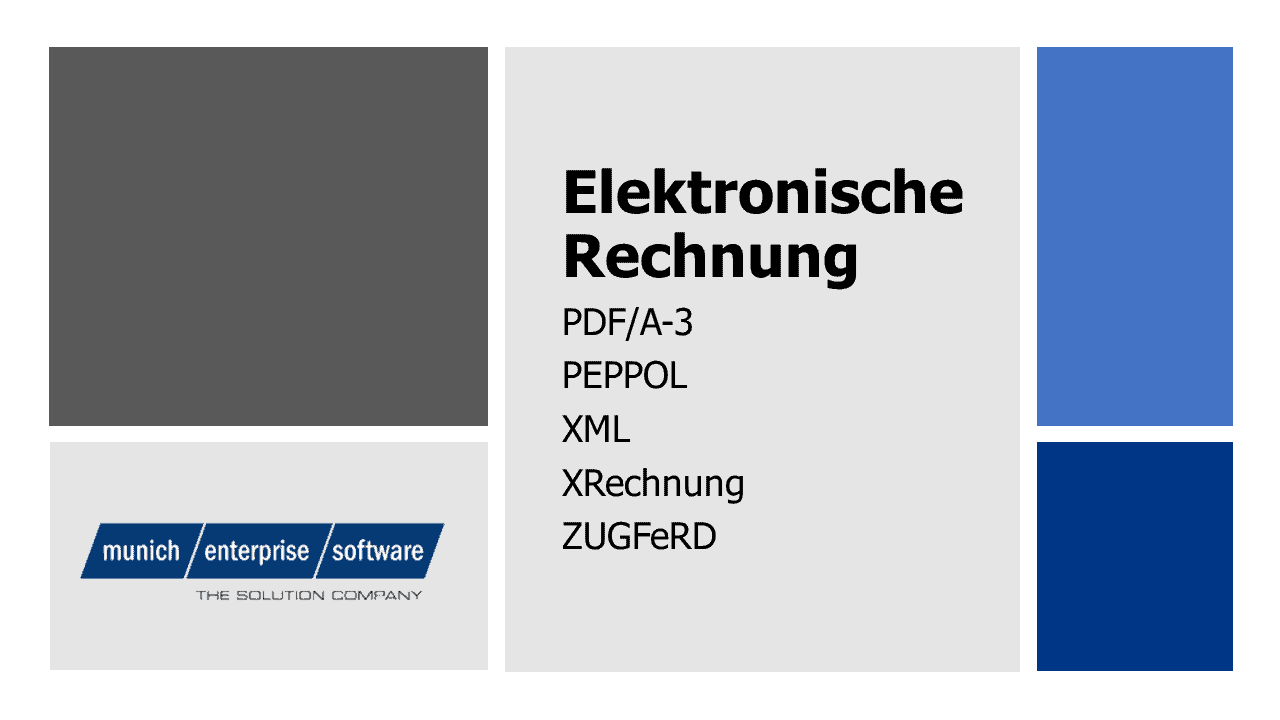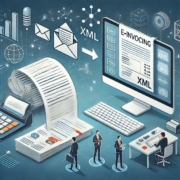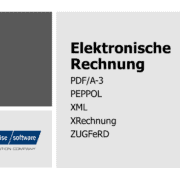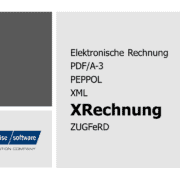Electronic invoices in SAP and their importance
Digitization is fundamentally changing accounting. One of the most significant developments is the introduction of e-invoicing, which helps companies to make processes more efficient, reduce costs and meet legal requirements.
Why it makes sense to switch to e-invoices

Economic and environmental benefits
The switch to e-invoices not only offers economic and ecological advantages, but also contributes to the optimization of internal business processes. Companies benefit from improved transparency and traceability of their invoices. Automating invoice processing reduces manual work and minimizes errors that can occur due to manual entry.
By switching to e-invoices, companies can reduce costs, speed up work processes and reduce their environmental footprint. Digital processing minimizes errors and significantly reduces material consumption. By eliminating paper documents and manual processing processes, not only can costs be reduced, but workflows can also be significantly accelerated. In addition to the financial benefits, the switch to e-invoices also contributes to environmental protection, as paper consumption and CO₂ emissions are reduced by transporting physical invoices.
Invoices are the heart of the economy – around 32 billion of them are issued annually in Germany. Many companies still use postal shipping, which is associated with high costs for paper, printing and postage. It is estimated that a single postal invoice, including processing and postage, can cost up to 9 euros, while an e-invoice is often only a few cents per transaction. The switch to electronic invoicing significantly reduces these costs and also improves the ecological balance. In addition, digitization simplifies the management and archiving of invoices.
Definition and formats of e-invoices
What is e-billing?
E-invoices differ from simple PDF documents because they are stored in a structured format that allows for automatic processing. This reduces errors, speeds up processes and improves integration with accounting systems. This reduces errors, speeds up processing, and makes it easier to integrate with existing accounting systems. A PDF invoice by e-mail does not meet these requirements. Permitted formats in Germany include ZUGFeRD 2.x and XRechnung. ZUGFeRD is a hybrid format that includes both a machine-readable XML file and a human-readable PDF version, while XRechnung is a purely structured, XML-based format specifically designed for exchange with public clients.
Legal framework
E-invoicing obligation from 2025
From 1 January 2025, companies in Germany will be obliged to use e-invoices for domestic B2B transactions. A transitional regulation will apply until the end of 2026 that will continue to allow paper and PDF invoices. From 2027, companies with a previous year’s turnover of more than 800,000 euros will have to use e-invoices exclusively. Small-value invoices of up to 250 euros and certain tax-exempt transactions are exempt.
Legal requirements for e-invoices
In addition to tax regulations, companies must ensure that their e-invoices comply with IT security and data protection requirements. Audit-proof archiving is particularly important in order to withstand legal scrutiny. Audit-proof archiving in particular is a decisive factor in withstanding legal scrutiny. Companies should therefore implement appropriate measures such as encrypted storage solutions and access restrictions.
Invoices have both a legal and a fiscal function – they serve as a document and accounting document. Companies must ensure that electronic invoices comply with the requirements of the Value Added Tax Act (§ 14 UStG), ensure readability and immutability and are archived in an audit-proof manner. Electronic invoices must therefore meet all legal requirements in order to remain valid. Compliance is crucial to avoid tax risks.

Steps to successful implementation
Planning and preparation
The introduction of e-invoices begins with an analysis of existing systems and processes. Companies should check which software solutions best fit their business model and how employees can be trained. In addition to the technical changeover, employee training is also an important factor in ensuring smooth integration. Companies should deal with the legal requirements at an early stage and check which technical solutions best suit their business processes.
1. Recognizing the benefits of e-invoicing
Many companies can use existing accounting or ERP software to create e-invoices, such as SAP, DATEV or Lexware. Anyone who has been creating invoices manually with a spreadsheet should switch to a modern invoicing system.
2. Observe legal retention obligations
Invoices must be archived for ten years. While paper documents take up space, electronic receipts can be stored in a space-saving manner. However, this requires secure backup solutions to prevent data loss.
3. Choose the right format
An e-invoice must be in a standardized format so that it can be processed by machine. This minimizes errors, speeds up processing, and enables seamless integration with digital accounting systems. The hybrid format ZUGFeRD, which contains both a PDF and an XML file, is recommended. Public clients only accept XRechnung format.
Advantages of switching to e-invoices
Efficiency and cost savings
The advantages of e-invoicing are versatile and extend across several business areas:
- Cost savings: Significant savings can be achieved by eliminating printing, paper and postage costs.
- Increased efficiency: Automated processes enable faster processing and approval of invoices.
- Better traceability: Thanks to digital archiving, invoices can be retrieved and searched at any time.
- Improved compliance: Regulatory compliance is facilitated by standardized digital processes.
- Optimized liquidity planning Faster incoming payments enable better financial planning and control.
The use of e-invoicing not only enables financial savings, but also improves operational efficiency and sustainability. Other benefits include:
- Sustainability: Going no paper contributes to environmental protection and reduces the carbon footprint of companies.
- Automated processing: Machine recording and integration into accounting systems minimizes sources of error and increases efficiency.
- Better traceability: Digital invoices can be retrieved with just a few clicks, which simplifies controlling and accounting.
- Faster payment receipts: An e-bill reaches the recipient within seconds, while a paper invoice takes several days.
- Reduced workload: Automated processes save time and costs.
- Integration with business software: Many programs already support the creation and processing of e-invoices.
- Easy archiving and searching: Electronic invoices can be stored efficiently and retrieved in seconds.
Conclusion: E-invoicing as the future of accounting
The introduction of e-invoicing represents a decisive step towards digital transformation. Companies that start this process early on will benefit from long-term competitive advantages. With the increasing automation of business processes, companies can not only increase their efficiency, but also focus on value-adding activities. In view of the legal obligation from 2025, companies should prepare for the changeover now in order to implement all technical and organizational measures in good time.
The introduction of e-invoicing marks a significant step forward for digital invoicing. It not only increases efficiency and reduces costs, but also improves collaboration between companies and authorities through standardized processes. Companies that deal with the changeover at an early stage benefit in the long term from optimized invoice processing, higher security and sustainable work processes.
E-invoicing offers companies an efficient, cost-saving and environmentally friendly solution for accounting. Studies show that digital invoicing processes can reduce CO₂ emissions by up to 70% by reducing the need for paper, transport and printing. With the legal obligation from 2025, companies should switch to digital invoicing at an early stage and choose a compatible format such as ZUGFeRD or XRechnung . Modern accounting software makes this transition much easier. Solutions such as SAP, DATEV, Lexware or SevDesk already offer integrated functions for the creation and management of e-invoices.
To make it as easy as possible for companies to switch to e-invoicing, we offer a tailor-made solution that meets all the requirements of modern digital invoicing. We would be happy to provide you with further information or present our product to you in a live demo – just contact us!










